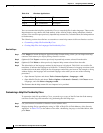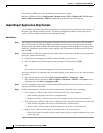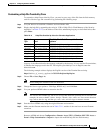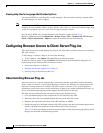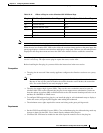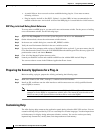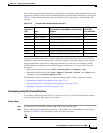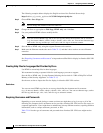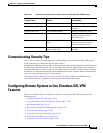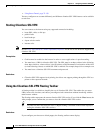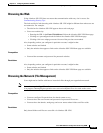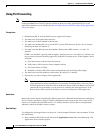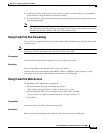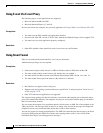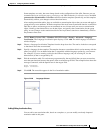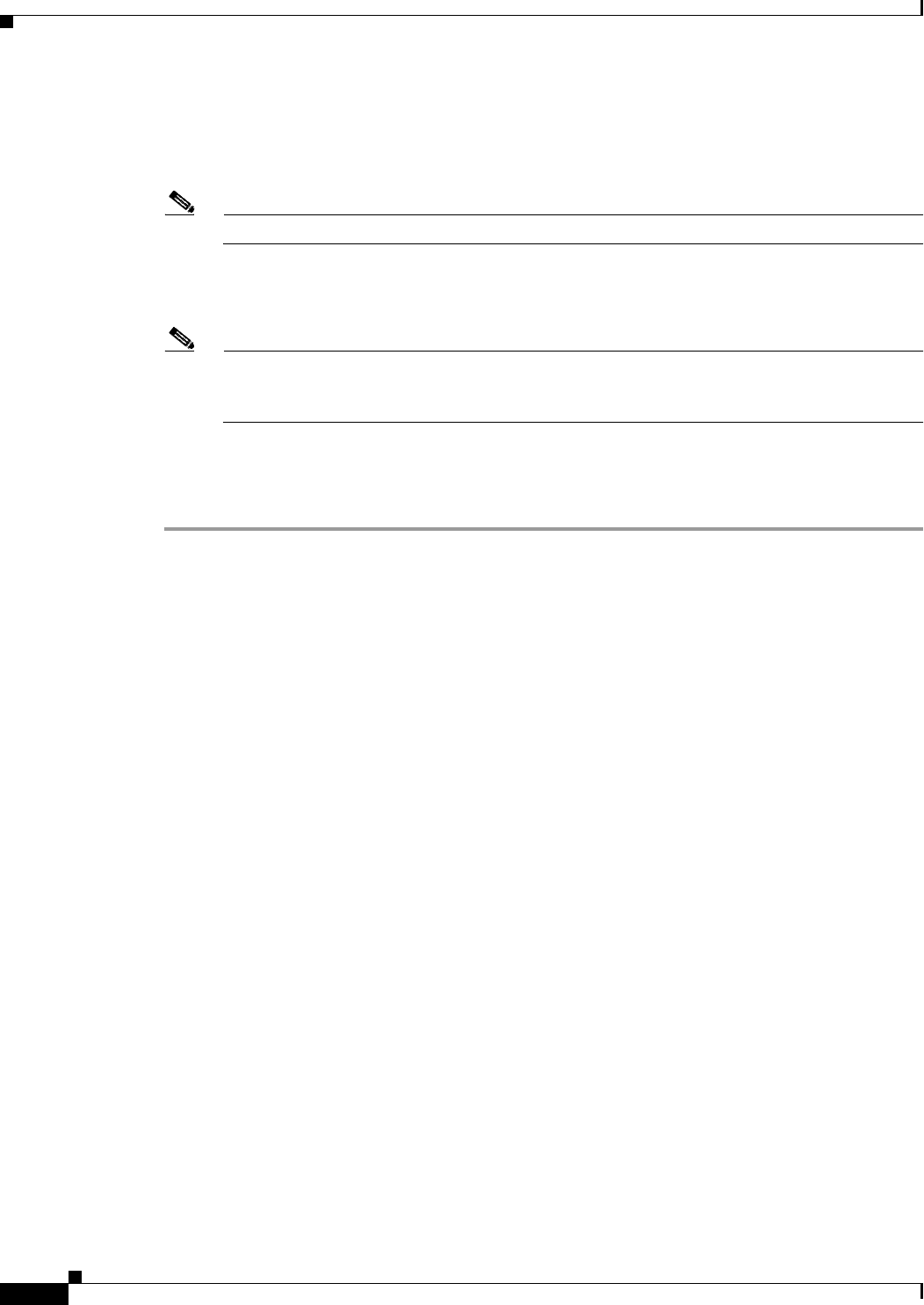
72-124
Cisco ASA 5500 Series Configuration Guide using ASDM
Chapter 72 Configuring Clientless SSL VPN
Configuring Browser Access to Client-Server Plug-ins
The following example address displays the English version of the Terminal Servers help:
https://address_of_security_appliance/+CSCOE+/help/en/rdp-hlp.inc
Step 3 Choose File > Save (Page) As.
Note Do not change the contents of the File name box.
Step 4 Change the Save as type option to Web Page, HTML only and click Save.
Step 5 Use your preferred HTML editor to modify the file.
Note You can use most HTML tags, but do not use tags that define the document and its structure
(e.g., do not use <html>, <title>, <body>, <head>, <h1>, <h2>, etc. You can use character tags,
such as the <b> tag, and the <p>, <ol>, <ul>, and <li> tags to structure content.
Step 6 Save the file as HTML only, using the original filename and extension.
Step 7 Make sure the filename matches the one in Table 72-13, and that it does not have an extra filename
extension.
See “Requiring Usernames and Passwords” to import the modified file for display in clientless SSL VPN
sessions.
Creating Help Files for Languages Not Provided by Cisco
Use HTML to create help files in other languages.
We recommend creating a separate folder for each language you want to support.
Save the file as HTML only. Use the filename following the last slash in “URL of Help File in Flash
Memory of the Security Appliance” in Table 72-13.
See the next section to import the files for display in clientless SSL VPN sessions.
Restrictions
You can use most HTML tags, but do not use tags that define the document and its structure
(e.g., do not use <html>, <title>, <body>, <head>, <h1>, <h2>, etc. You can use character tags, such as
the <b> tag, and the <p>, <ol>, <ul>, and <li> tags to structure content.
Requiring Usernames and Passwords
Depending on your network, during a remote session users might have to log in to any or all of the
following: the computer itself, an Internet service provider, clientless SSL VPN, mail or file servers, or
corporate applications. Users might have to authenticate in many different contexts, requiring different
information, such as a unique username, password, or PIN.
Table 72-14 lists the type of usernames and passwords that clientless SSL VPN users might need to
know.



